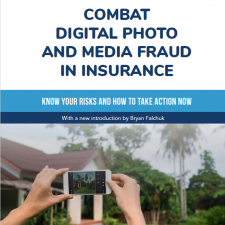As discussed, we’ve created a set of recommended guidelines for gathering, handling and inspecting digital media used to make business decisions. This week we’ll dig into the second guideline, Quality.
What is Quality?
Quality is a rather subjective evaluation of how clear and usable digital media, like an image, might be. Similar to resolution (guideline #1) quality directly impacts how a company makes decisions about the details in the image, where poor quality might lead to poor analysis. Furthermore, poor-quality images can sometimes obscure fraud.


Impact of Low-Quality Images in the Insurance Process
While low quality is not a definitive sign of fraud or malicious actions or intent, low quality images should be flagged, rejected or replaced early in the data gathering process. By having a process that immediately detects low quality and then automatically requests a customer to resubmit that image or video is the ideal way to prevent issues whether it be a claim, quote or other transaction. This process of flagging, rejecting and re-requesting a different image can be seamless within an existing self-service web or mobile app.
What Causes Low-Quality Images?
- A smudge on the camera lens
- An older device with lower settings
- Images taken in low light or poor conditions
- Camera or object movements during capture
How Attestiv Helps Enforce Quality
Using AI models, Attestiv measures the quality of each image, providing a score that reflects the overall clarity. The score can be used to determine if the image is good enough for the transaction, subsequent analysis, processing or generating appraisals.

Using Attestiv web workflows or your own app coupled with Attestiv technology, we have mechanisms to retake photos as needed on the basis of quality. Retakes can also be automated using APIs, where a user is asked to retake a photo.
| Category | Risk | Remediation | Attestiv Platform Solution |
|---|---|---|---|
| Quality | Low quality media can hide fraud, can result in poor analysis or appraisal | Measure quality and request retakes if needed | AI-model measures quality inline. Multiple tools to request retakes if needed |
Attestiv offers a suite of solutions to implement, enforce and audit best practices for digital media intake. Attestiv can be customized and implemented discretely via APIs to build a set of best practices around digital media intake that are sustainable, consistent and tamper-resistant, as part of an incremental business improvement process.
Join us next week as we discuss guideline #3 – Tampering.






